#longmen
Explore tagged Tumblr posts
Text

The species is referred to as the "Longmen Dragonfish," with some just sticking with "Longmen" or "Longmen Fish." Indeed, many of the locals call it "Dragonfish," which always gets people wondering why the species isn't just called that. To further the point, the Longmen Dragonfish is only called its full name by researchers and outsiders who come and visit the region, so thus raises the question of why the locals don't get to name their own species. Well, the answer comes in a couple parts. First off, the locals did get to name the species, as that is where the name "Longmen" comes from. Second, species with long names very rarely ever get their full names said out loud by anyone else besides researchers and the occasional tourist, so just because someone shortens it doesn't mean that is how it should be. I mean, have you heard anyone else besides me say the name "Great Mottled Caecilian?" Because I sure haven't, but that is its name! And thirdly, do you have any idea how many "dragonfish" are out there in the world?! We can't just call this species "dragonfish" because it would confuse so many other people from different regions. Turns out, almost every region on this planet has its own dragonfish, which they just simply call dragonfish. So you see why we can't use that simplified name? And if any idiot out there thinks we should just pick one of the many and declare that the real deal dragonfish, I suggest they personally visit every culture that has one and try to tell them their beloved species is not a "real" dragonfish and that this other one on the other side of the world is the authentic one. Best of luck to you on that!
The Longmen Dragonfish is incredible species of fish that is found out east, spending most of their lives in saltwater. This may come to a shock to some folk, who only know this species from their legendary migrations up river. With all the images and stories of them in freshwater, people assume they are always in lakes and rivers. This is not true, but I can understand the confusion. While the Longmen spends most of its adult years in the deep sea, very few people actually ever see them there. That is because their feeding grounds are far off and rather deep, thus they are not often caught. It is only when they pack the rivers and waterways that we see them and decide to immortalize their journey in art and folklore. However, we can't get to that yet! Possibly another reason why people don't think of them much as saltwater fish is because even if someone did catch one far out in sea, they would never think to call it a "dragonfish." They aren't exactly something you would equate with the elegant and powerful nature of a dragon. Dull red scales, a thick pudgy body, nubby "horns" and a face more befitting a carp. Show most folk this fish, and they would think it nothing more than just another bottom feeder. This is what the majority of Longmen look like, swimming through the depths for small fish, critters and plankton to feed on. If this was their entire life, well, this wouldn't be much of an entry! Like I mentioned before, there is a time when they go to freshwater. Or more specifically, a time when they return to it.
When a Longmen Dragonfish reaches maturity, it will get the drive to head towards shore and seek out the freshwater rivers that dump into it. They know how to find these waterways because these freshwater streams are where they were born, and where they exited from when heading out to sea. Now they hear the call to return to their waters of birth, and the Longmen heed it. They arrive in force, rushing towards the rivers in the thousands. As they encounter the drop in salinity when they get close to where the rivers meet the sea, they undergo changes to survive the transition from saltwater to freshwater. Their bodies grow stronger to handle the coming journey and their scales brighten in color. When the Longmen come home, every being in the region knows it. The rivers are packed to the shores with their squirming, jumping bodies. Some folk claim there are so many of them that you could walk across a river on their backs. You could watch this journey and swear the river had turned from blue to red, as there seems to be more scales than actual water. This desire to return home and breed, however, is not an easy one. There are plenty of obstacles in the way, be it rocks, waterfalls or hungry predators. The rivers they travel are treacherous, fierce currents, roaring waterfalls and jagged stone. The Longmen care not about these things, as they simply swim as hard as they can and jump as high as they can whenever the situation calls for it. They will push against the strongest of currents and leap up powerful waterfalls without a single care, because all that matters is making it to the end. Each obstacle will claim a chunk of the swarm, but with such numbers, it hardly seems to matter. Even when every meat eating animal in the region comes rushing to these rivers for an easy meal, the Longmen swim on. While some species believe in "safety in numbers" the Longmen believe "better odds in numbers," as each individual hopes that there are enough others amongst them that the hungry hordes will take them instead.
No matter the losses or the obstacles, the Longmen Dragonfish press on. Their journey goes on for miles on end, seeking to reach the innermost waters of the land. They want to make it there because the further inland lakes and rivers have less predators and competition, which makes for better odds for their young. So they seek to get as far as they can, no matter the cost. If you were to follow their journey and see the individuals as they get further along, you would swear that they are changing. The scales are brighter, that is for sure, but their bodies are different too. Their snouts appear to elongate, their chubby forms becoming more serpentine. Collect the dead ones from along the rivers and compare them to those further inland. You will see that this is true! Their bodies are still changing as they migrate and brave the hostile waters. This change makes them stronger and faster, which is good for avoiding toothy jaws, hungry claws and leaping over impossible rocks and falls. However, it comes with a cost. The Longmen work their bodies into overdrive, and sooner or later their flesh cannot continue. Their energy fades and their muscles give out, and many will not finish the journey. Where ever they fall, they release their eggs and sperm, hoping that at least something survives from this sacrifice. If they made it a good distance in, there is a chance some young may survive, but the real good odds are at the very end of this insane trek.
Of the millions of Longmen born with each run, only a meager percentage will make it to adulthood. And of those thousands who take the journey on their own run, a similarly low percentage of them make it to the spawning waters. They will reach their destination exhausted and dying, but it will all be worth it. Here they will spawn, releasing eggs and sperm. These waters that are barricaded off by waterfalls and fierce currents means that their young have less competition with other fish and creatures, and thus a higher chance for survival. Once this act is done, so are the Longmen. With their next generation secured, they finally let their bodies give out, and the whole lot of them perish. Rivers and lakes once filled with vigorous and eager life are now graveyards, with countless fish corpses drifting about. There is a bit of tragedy to this, to see so much death, but the local wildlife would scoff at our mourning. For them, this is the last feast of the season, and they happily partake and eat their fill. The life that was once born in these waters has returned, and here is the final resting place for them.
But not for all...
For almost all Longmen Dragonfish, the lakes and rivers that sit at the foot of great mountains are the end goal of their entire lives. They prepared during their youth to gain the strength to make it here, and sacrificed everything to reach these shores. Well over ninety percent of them will die here content, with their young laid and ready to be born into the world. But there seems to be a rare few that don't stop here. While the others rest in these waters and begin to spawn, there is a small school of Longmen that will not pause in their journey. Instead, they seek a different haven for their young. But that is behind one last obstacle. In many of the spawning grounds of the Longmen, there is a great waterfall coming off the mountain that feeds into it. Towering in height and intimidating in its fierceness, it is an opponent no fish would ever dare challenge. And yet some do. We currently don't know what drives some of these Longmen to attempt this obstacle, if it has to do with health or energy, or if it is predestined amongst them. Perhaps something in their lineage calls for them to dare the impossible. These fish will throw themselves at these great falls, again and again as they seek to climb its roaring currents. It is no easy task, and many will fall. They will give up and return to the great spawning to spread their young there. But, against all odds, some will succeed and make it to the very top. They will climb and fight onward, leaving most of their brethren behind, and they will find a different kind of spawning ground at the end of it all. A tranquil lake awaits them, a sacred pool of water atop the mountain, where few others can reach them. Here is where they shall lay their eggs and spread their seed. Here is where they finally stop to rest. But even then, it isn't the end. Many Longmen die on this journey back home, but those who reach these sacred pools will not. They have a new purpose.
Though their bodies exhausted and energy depleted, something about these mountain lakes keep them alive. Perhaps the water quality, or the temperature or some factor we haven't figured out yet. Or maybe because they aren't alone here. Though they are weak, they are safe, as these waters are protected. Great serpentine forms swimming around them, warding off any predators that would try to finish the job. A current theory is that these great fish are what keep the newcomers alive, maybe releasing some kind of trigger to keep them going and to encourage their final transformation. Their size grows, their horns sharpen and their bodies turn long and powerful. Scales harden into armor and the snout of a carp becomes that of a great beast. Here, upon the mountain, the simple fish from the sea becomes a dragon.
What survives in these mountain pools is what people mean when they say "dragonfish." They very much look the part! Long serpentine bodies, with gorgeous scales, a fierce toothy snout and elegant whiskers! In these lakes, the Longmen feed and regain their strength, while also protecting their eggs and young from predators. While the others down below leave their young to chance once they perish, these ones stick around to guard them. Not only that, but they seek to protect all. Those that become these true Longmen Dragonfish will be in these waters during the whole run, swimming alongside their smaller brethren and protecting the hordes the best they can. Predators who swoop in for an easy meal may find themselves on the menu instead, when the frothing waters burst forth and a great fish lunges out and seizes them in its jaws. Okay, "protection" may seem like a strong word, as these dragon adults are actually preying on the animals that come to feed on Longmen, but the end result is still the same! They stalk the rivers and lakes during the run and feed on whatever is lured into the feast. And as the run comes to an end, they make for that tranquil mountain pool to await the new arrivals. Those that make it shall join the breeding stock, as both the transformed and non lay their eggs and seed. They then remain in this lake, watching over their young until they are ready to depart to the ocean. The Longmen Dragonfish will escort them down the river, once again feeding on anything that dares threaten their young. When the freshwater meets the salt, the adults break off and the young vanish into the deep. The guardians have done their job for this season, and return to their life in freshwater.
For these special adults, the locals tend to call them "ascended." Not "adult Longmen" but "ascended Longmen." These ones spend the rest of their lives in freshwater, living a more predatory lifestyle, going after larger prey. Their jaws are long and powerful, perfect for snaring and crushing prey. Their scales are like metal armor, warding off claws and even blades! Along their bellies are special sacs that they can inflate with a gas they produce, which lightens their weight when they leap from the water. By swelling these up as they jump from the water with their powerful tails, you would swear they could fly! Such height! Such grace! They practically hang in the air and slowly come crashing back down to the surface. While it isn't true flight, it is perfect for leaping over waterfalls in a single bound or even jumping across land to reach new water bodies! It allows them to master what the smaller ones struggle to overcome, which makes them effective guardians when the run is underway. The run is not a challenge for them anymore, it is simply a part of their life now. They forever swim these waterways to devour those who would harm their kind and ensure their species continues on.
First off, anything with the name "Dragonfish" is already guaranteed to make an impact with the local culture. Add to that this incredible migration and tale of perseverance? Why, the metaphors and legends write themselves! The Longmen Dragonfish is the star of many myths and stories, of the simple carp that became a dragon. Their ascended forms are seen with awe and gather great respect. The runs themselves are times of festivities and excited observation. Folk will line up along the river to watch the horde of them swim through! In many areas, the fishing and taking of live running Longmen is forbidden, as it is interfering with this sacred migration. Those that fall or perish naturally may be collected, and you will find many folk sifting through the countless dead. While mounds of dead fish sound like a free dinner, most folk don't eat them. Rather, the scales may be ground up for medicine or other purposes, while the flesh is turned to fertilizer. I feel there is something poetic there, of returning them to the earth, nourishing the environment they were born in! The fishing or harming of an ascended Longmen is strictly forbidden, which frustrates trophy fisherman to no end. Sadly, this does not mean that this species is perfectly safe.
When you have something so big and legendary as an ascended Longmen Dragonfish, people are going to develop an interest. Many rich nobles and high class members of society see them as symbols of royalty and power, and thus want a part of these fish for themselves. Some have tried to keep them in massive aquariums, as incredible displays in their collection. However, most of these fare poorly in captivity, as they need a huge amount of space and a whole lot of food. Even those that survive and are given these things are noticeably smaller then their wild brethren. When legends say that a single scale of an ascended Longmen will bring you luck and protection, then a whole lot of folk will try to make armor and amulets from them, which means poaching. Killing of these fish for their valuable parts is not uncommon, nor is collecting their young to sell in the pet trade. It is not a pretty thing. Even worse still, the sacred mountain lakes they transform in once became the obsession to many, who thought these waters had healing properties or could bestow a number of blessings onto those who bathed in it. Suddenly, many of these sites became spas and highly fought over property, which dealt a devastating blow to the Longmen population. Thankfully, though, smarter minds prevailed and realized their beloved icon was going to perish because of this. These spas and opulent water front properties were seized and turned into shrines, and the waters were restored to nature. Efforts to help boost the Longmen populations back up were a success, and that old injury has almost completely faded! Now these pools are under protection, but you can still visit them and marvel at the great fish that swim in them. They do have some fountains and small pools that folks can dip their fingers into to get a bit of that blessed shrine water. Obviously, fish-filled water doesn't provide special healing and stuff like that. And obviously I still partook in some anyway! I mean, you still got to test your theories!
Chlora Myron
Dryad Natural Historian
---------------------------------------------------------------
"Longmen Dragonfish"
Back at it with the dragons! Except now fish!
35 notes
·
View notes
Text
Wu took the title Maitreya (Future Buddha) the Peerless, and legend holds that the face of the beautiful Maitreya Buddha statue at Longmen reflects Wu's (Figure 7.3).

"Why the West Rules – For Now: The patterns of history and what they reveal about the future" - Ian Morris
#book quotes#why the west rules – for now#ian morris#nonfiction#wu zetian#maitreya the peerless#maitreya#buddha statue#longmen#8th century#chinese history
0 notes
Text
INTERESTING


A Rabbit Inspired Hanfu Set, consisting of:
Cross-collar shirt
Fur-lined cross-collar bijia 比甲
Huwan 护腕
Ribbon cap
Pants
Diexie 蹀躞带
Qunjia 裙甲
Link to full collection
Design thoughts below the cut:
This hanfu set is based off that one segment in the original Ballad of Mulan, which talks about how you can’t really tell a male rabbit from a female rabbit when the two are running together.
To take inspiration from Mulan, I themed this set around armor! I leaned more towards traditional theater depictions of soldiers and generals rather than historical ones to add some more flair and style. I'm particularly proud of repurposing a general’s ornamental pheasant feather headpiece into emulating bunny ears!
#illustration#hanfu#chinese fashion#clothes#design#concept#armor hanfu my beloved.... i had fun with the belt design hehe#not really related to the whole gender theme of my hanfu set but also note Tu'er Shen- the Chinese mlm god of love- is the rabbit god*#*and thus rabbits are also traditionally gay imagery#i think this set might be my favorite from the collection!#longmen#readmore +#meta#addition
226 notes
·
View notes
Text
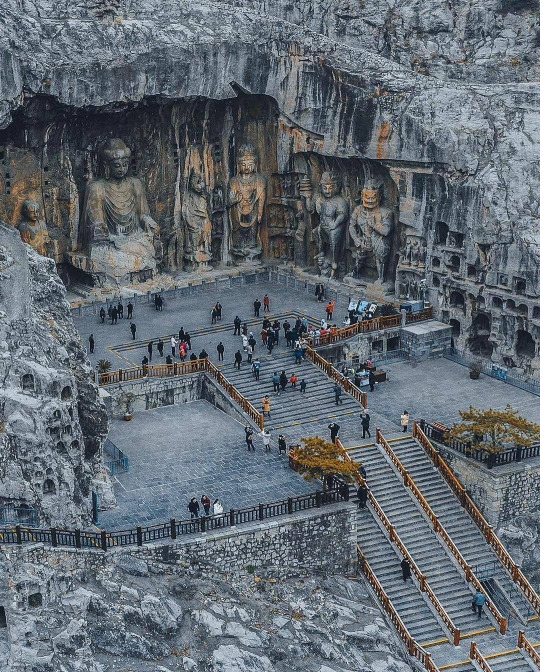
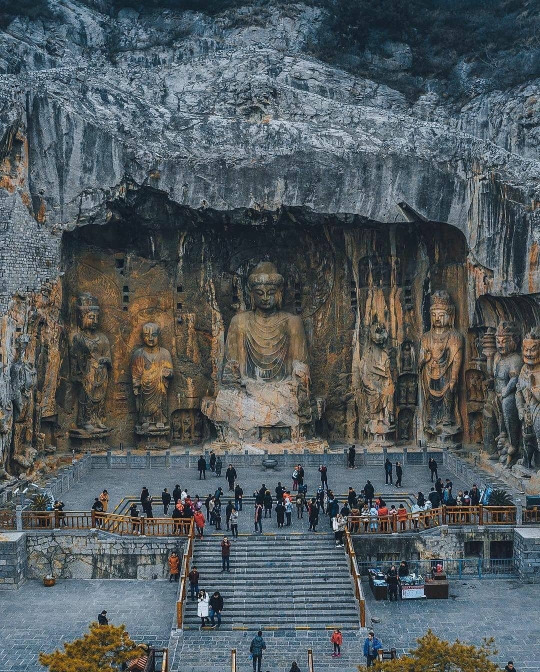
The Longmen Grottoes (龙门石窟) 'Dragon's Gate Grottoes, or Longmen Caves are some of the finest examples of Chinese Buddhist art.
10K notes
·
View notes
Text



What a legendary architectural masterpiece 😮😲😯🤯😍
10 notes
·
View notes
Text

Magikarp is one of the best Pokémon and doesn’t deserve all the hate it gets!
🐟🇨🇳🐉
#history#magikarp#dragon gate#gyarados#liyu tiao long men#mythology#chinese history#carp#game freak#emperor yu#kanto region#yellow river#video game history#pokemon#expression#longmen mountains#dragons#china#video games#sui dynasty#chinese mythology#exams#pokemon leafgreen#pokemon firered#medieval history#nickys facts
6 notes
·
View notes
Text
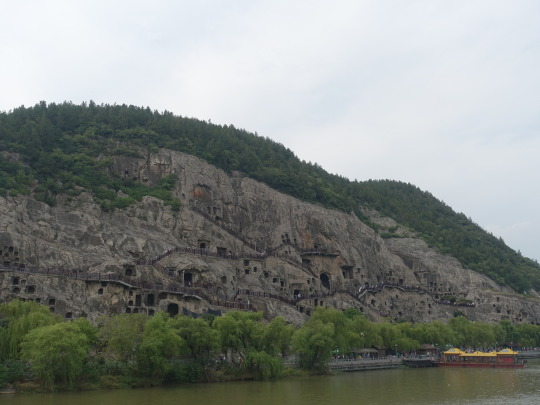




2 notes
·
View notes
Note
Hoii 🤭
I love Bo-Cheng 🥺 can you tell me more about them??

asdfghjkl thank you for taking interest in my girlie. ;;
I will write some artist notes down here too~ Bo-Cheng is a descendant carp dragon from the Chinese myth that can be found here! https://gotheborg.com/glossary/longmen.shtml
It's a tale on no matter how small you are you can accomplish great feats, which is what really inspired me about the myth. In her design she has very obvious eastern dragon traits but she does have spots like koi fish that was developed over time similar to koi fish now that originally originated from china.
I took a bunch of artist liberties when doing my research into making her have a lot of white on her overall design as Guan Yin's color representation is white which is meant to depicted purity. I also really liked the fact the animals she generally was seen drawn with/riding atop of besides her lotus was dragons and carps, so I took that other old myth and combined the two to create Bo-Cheng.
Bo-Cheng also wears a huge ancient Chinese gold coin as a representation of luck and a jade and pearl necklace she was given to her as a child which helps contain her powers. She is a water spirit but also a spirit of life due to her master's influence. She wears two spider lilies which is symbolic of life after death. She wears one for herself and one for pupils as a metaphor because of the idea of reincarnation.
Her relationship to the canonical characters is shes a second mother figure to Red Son. One that is kind yet stern and she has a strong distaste for Princess Iron fan and her treatment towards her own son along with being a friendly acquaintance to the rest of the gang in in passing.
She finds Wukong's antics funny and is a good friend to him as he finds her company extremely enjoyable being that she reminds him a lot of the old goddess who helped him so many times. They are good friends they just don't constantly see one another all the time because their duties to their pupils and protecting their homes.
She has no children and doesn't plan to have any of her own but rather considers Red Son, Mei, and MK like children of her own as a teacher.
Shes essentially a huge love letter to many myths that I grew to love so dearly over the years and I hope to continue making more content of her in other forms JTTW media and not just LMK.
As for her relationship to Macaque. It's complicated. She finds him to be a headache from time to time but can see how he's slowly improving to be better. The typically can be seen verbally sparring with one another but deep down they deeply care for each other even if they refuse to admit it. She's mainly mentoring him in attempts to distract him and she helped him find his love for shadow theater. She's kind of like his therapist and can see how scared he is to truly open up to anybody anymore including after the whole LBD incident, but their working on it.
7 notes
·
View notes
Text
PRETTY

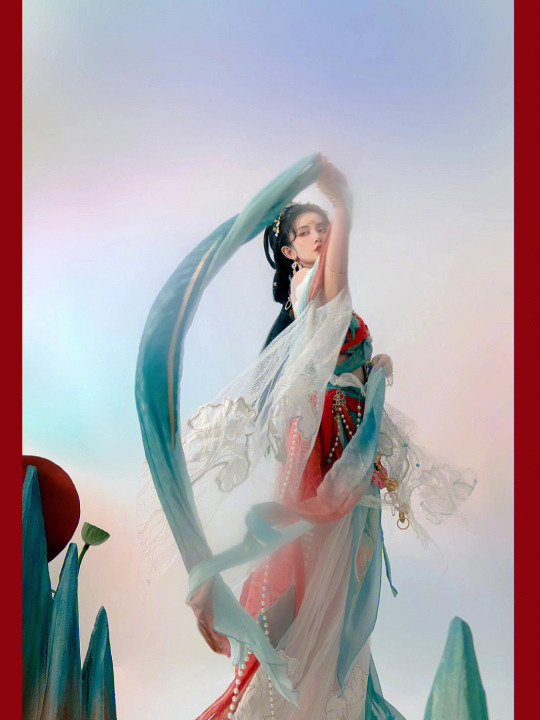
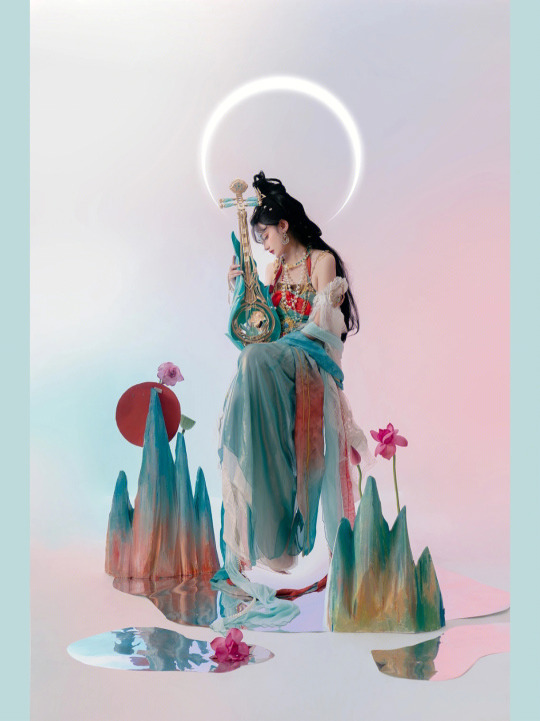
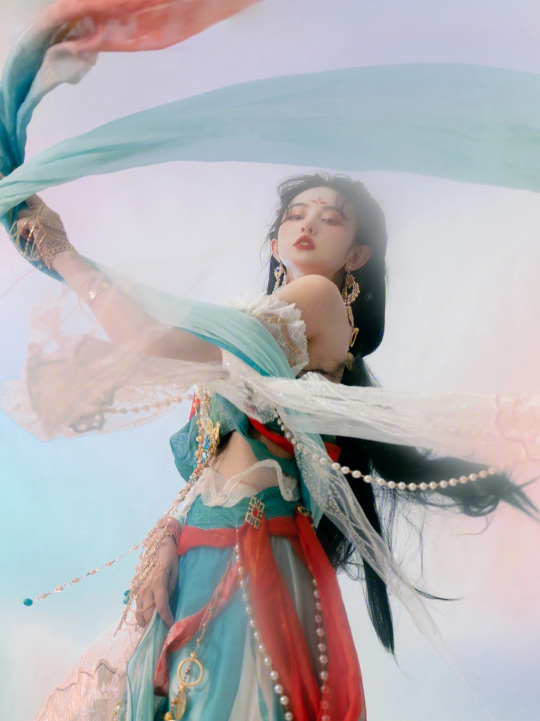

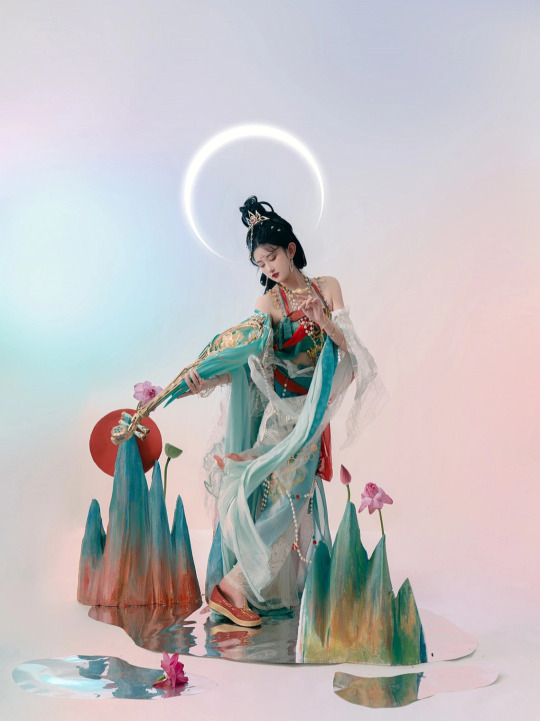
Dunhuang Style Photography 2
Qian Nv You Hun Online x Longmen Grottoes Research Institute Works from Photographer Shu Qing Cheng
#dunhuang#feitian#apsara#feitian costume#Qian Nv You Hun Online#Longmen Grottoes Research Institute#Shu Qing Cheng#hanfu#of sorts
180 notes
·
View notes
Photo

Emperor Xiaowen and his entourage worshipping the Buddha, ca.522-23
Northern Wei dynasty, China
From the Central Binyang Cave, Longmen, Henan province
Limestone with traces of pigment
H. 82 in. (208.3 cm); W. 12 ft. 11 in. (393.7 cm)
Together with a companion piece showing an empress and her attendants (now in the Nelson-Atkins Museum of Art, Kansas City), this depiction of an emperor and his entourage once adorned the Central Binyang Cave (also known as Cave 3) in the Longmen complex, near Luoyang, in Henan province. It was positioned centrally on the northeast wall between a group of protective semidivinities above and a narrative debate scene below. Xuanwu commissioned the construction of the Central Binyang Cave in honor of his father, the emperor Xiaowen (r. 471–99), and his mother, the dowager Wenzhou (d. 494); the emperor and empress in the reliefs are therefore believed to refer to his parents. A figure wearing court garments and holding a tasseled baton leads the procession. He is followed by a smaller figure wearing armor and another who stands before the emperor, holding an incense burner. The trees originally indicated the point at which the procession moved around a corner, from the north to the east wall. Several of the attendants hold lotuses or other flowers and offerings, and the entire procession can be understood as making offerings to the Buddhas in the cave, an act of merit making that would continue in perpetuity and improve the future lives of the participants.
Collection of the Metropolitan Museum of Art
#The Met#Metropolitan Museum of Art#Northern Wei dynasty#Northern and Southern dynasties#6th century#relief#religion#art#art history#Chinese#Binyang Caves#Longmen Grottoes#Henan#Xuanwu era#period dress#stone#limestone#portrait
1 note
·
View note
Text

0 notes
Text
Women wearing Tang Dynasty hanfu modeled after the depictions of patrons in the mural art of the Mogao Caves in Dunhuang (敦煌莫高窟).
They are posing in front of the Longmen Grottos (龙门石窟) in Luoyang, Henan.
330 notes
·
View notes
Text
Cultural Architecture: NWT Totem Poles - The Specifics Pt. 2
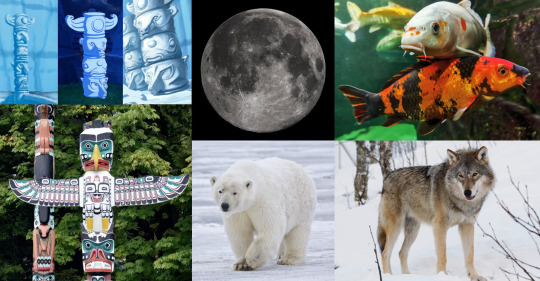
Among most of the totem poles we see throughout the Northern Water Tribe (NWT), four representations appear consistently throughout. For this post, I will be covering the final two.
Koi Fish
The third totem is clearly a koi fish with long whiskers and a marking on its forehead. In other words, it's a reference to the physical forms of the moon and ocean spirit. I can't help but wonder if Aang's realization of Tui and La's true forms was unconsciously informed by the all the koi head totems omnipresent throughout the NWT.
Culturally, koi fish are yet another example of the Chinese influence in the NWT. In Chinese culture, koi represent fame, family harmony and wealth. There's also a famous Chinese folktale about koi fish and other carp:
Along the Yellow River, there is a legendary waterfall that cascades from a magical mountain top known as Longmen (登龍門), meaning the Dragon's Gate. If a carp can swim upstream against the currents and hop over the waterfall into Longmen, the fish will transform into a dragon.
Thus, koi fish can also represent determination, courage, and perseverance. The connection between koi and dragons also strengthens the fan theory that the dragons Ran and Shaw might be the Fire Nation's equivalent to Tui and La. Perhaps the dragons are the spirit of Sun and Fire respectively?
Wolf
The totem beneath the koi depicts a wolf. The wolf head totem also bares a striking resemblance to the headdress that Sokka wears in "Day of the Black Sun" (Season 3, Episode 11). Wolves are prominent figures in the mythologies of many Indigenous American cultures, particularly those whose societies were oriented around hunting.
Within different Inuit groups, wolves are called amarok (multiple groups), amagok (Inuvialuit), and amaguk (Inupiat). These names refer both to normal wolves and to the gigantic, supernatural wolf of Inuit religion. There are two Amarok-focused tales that I'd like to detail in this post:
A persecuted and physically stunted boy seeks to increase his strength. When he calls out to the lord of strength, Amarok appears and wrestles him to the ground with its tail. This causes a number of small bones to fall from the boy's body. The Amarok tells the boy that the bones had prevented his growth; he instructs the boy to return daily in order to develop his strength. After several days of wrestling with the Amarok, the boy is strong enough to overcome three large bears, thus gaining him the esteem of his village.
The land was once full of caribou; the people lived well and were happy. But the hunters only killed those caribou that were big and strong. Soon all that was left were the weak and the sick. The people began to starve. And so they called upon Amorak, the spirit of the wolf, to winnow out the weak and the sick, so that the herd would once again be strong. The people realized that the caribou and the wolf were one, for although the caribou feeds the wolf, it is the wolf that keeps the caribou strong.
From these two stories, we get quite a nuanced conception of what the wolf represents in Inuit culture. While wolves represent strength in many cultures, these tales really emphasize the wolf as a creature that strengthens those around it. Through this worldview, we understand strength not as an innate or individualistic quality, but one that's nurtured through mentorship and interdependence.
This makes Sokka's adoption of wolf imagery during "Day of Black Sun" all the more appropriate. Sokka is certainly not the most powerful character in the show, but his role as the leader strengthens the group as a whole.
319 notes
·
View notes
Text
miscellaneous sketches
study of a late 19th century qing dynasty woman
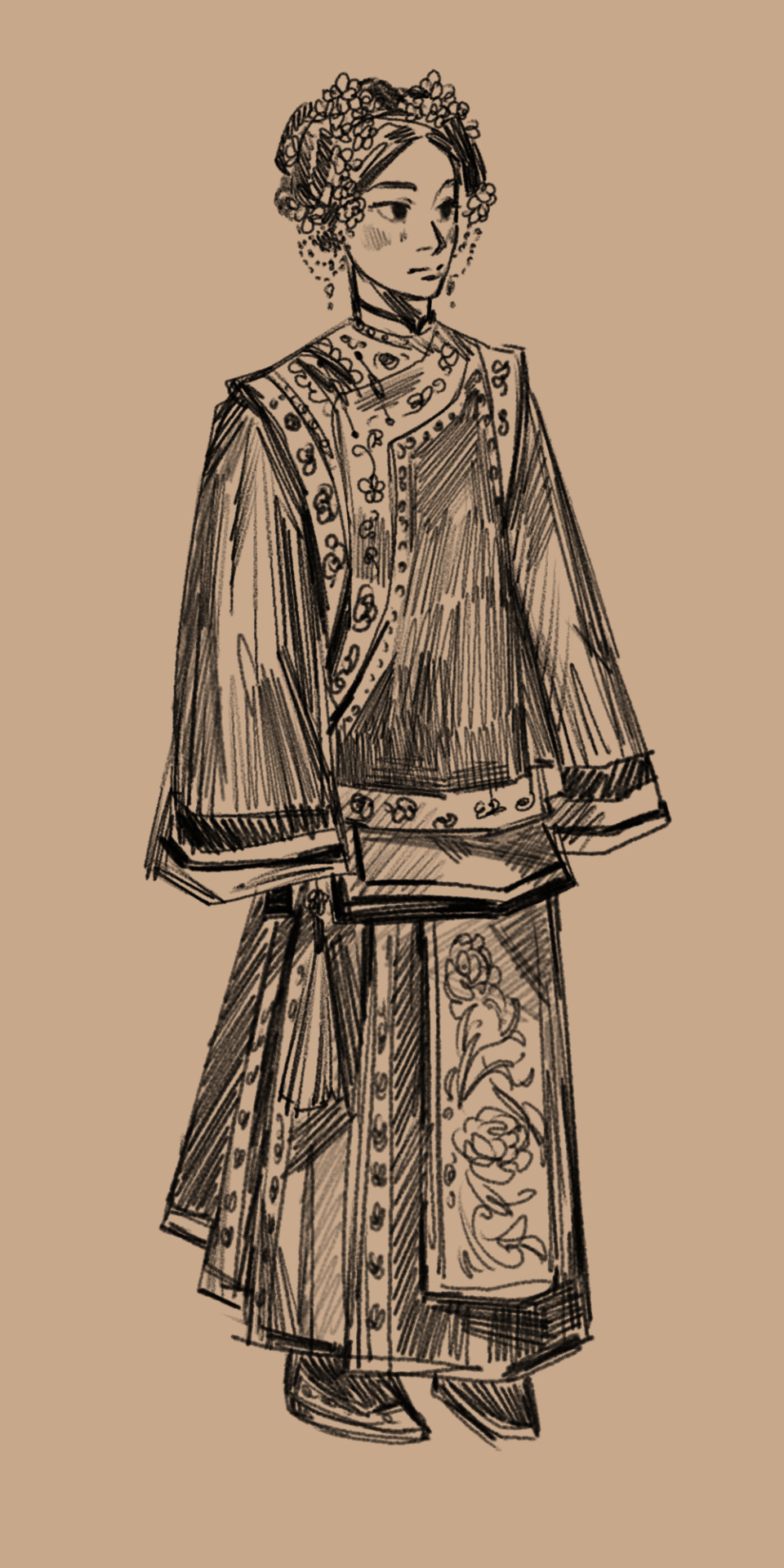
manchurian noblewoman
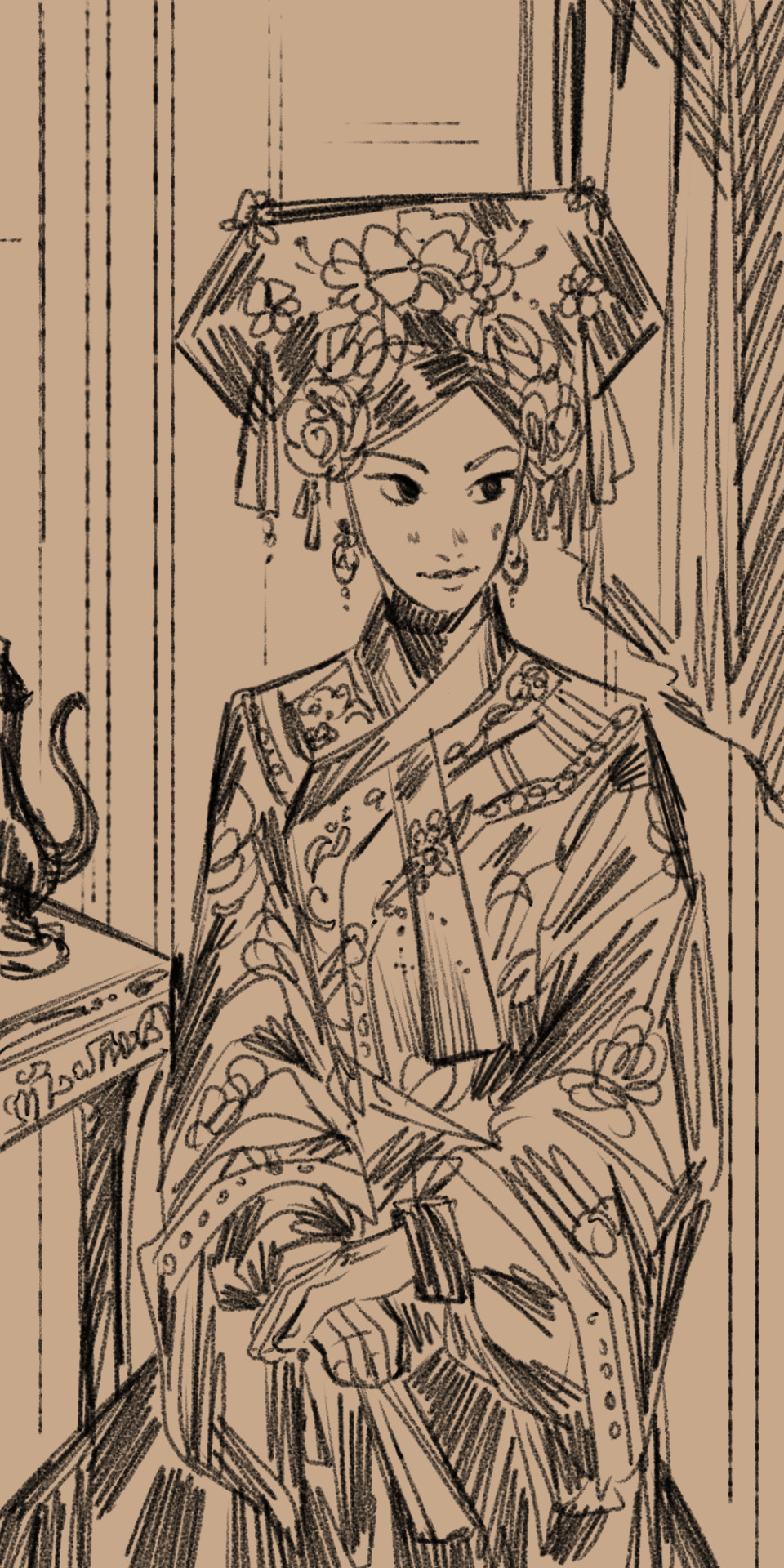
tang dynasty inspired (a little bit of longmen too)

ming dynasty inspired clothing with this one
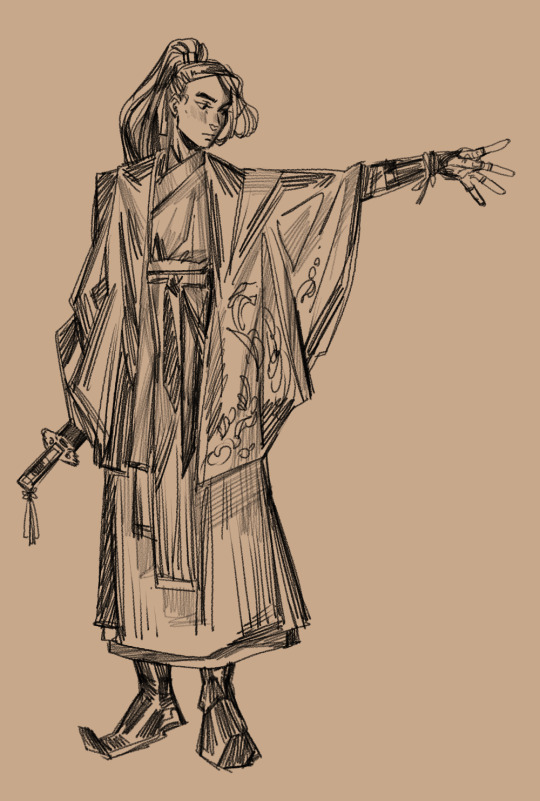
#art#digital art#digital illustration#sketch#chinese#chinese fashion#art study#medibang#my art#mizpah.art
239 notes
·
View notes
Text
The tale of Longmen or of the Dragon Gate is primarily a Chinese myth, but it has been embraced by the Japanese as well.
It's a proverbial idiom. The rising one's self higher through trial and effort. A carp swimming up a waterfall to pass through the dragon's gate, becoming something powerful and noble. It was meant to inspire students.

The history is fascinating because the legend says Yu the Great cut through the mountain causing a flood that swept the silver carp down stream where they complained to Yudi the Jade Emporer who told them that if they could swim up the waterfall they would be turned into dragons. The few that managed turned into dragons the second they passed the gate and flew away.

Of course, in Japan some of these details have changed, but all the same...
Magikarp is "useless" (It is one of my favorite pokemon and I will refrain from arguing about how it is, in fact, very cool)
Gyarados is only useless in the meta, but it sure has a bitchin' design, no?
There is no toxin here, only hope. Your racism is showing, my friend.

16 notes
·
View notes
Text
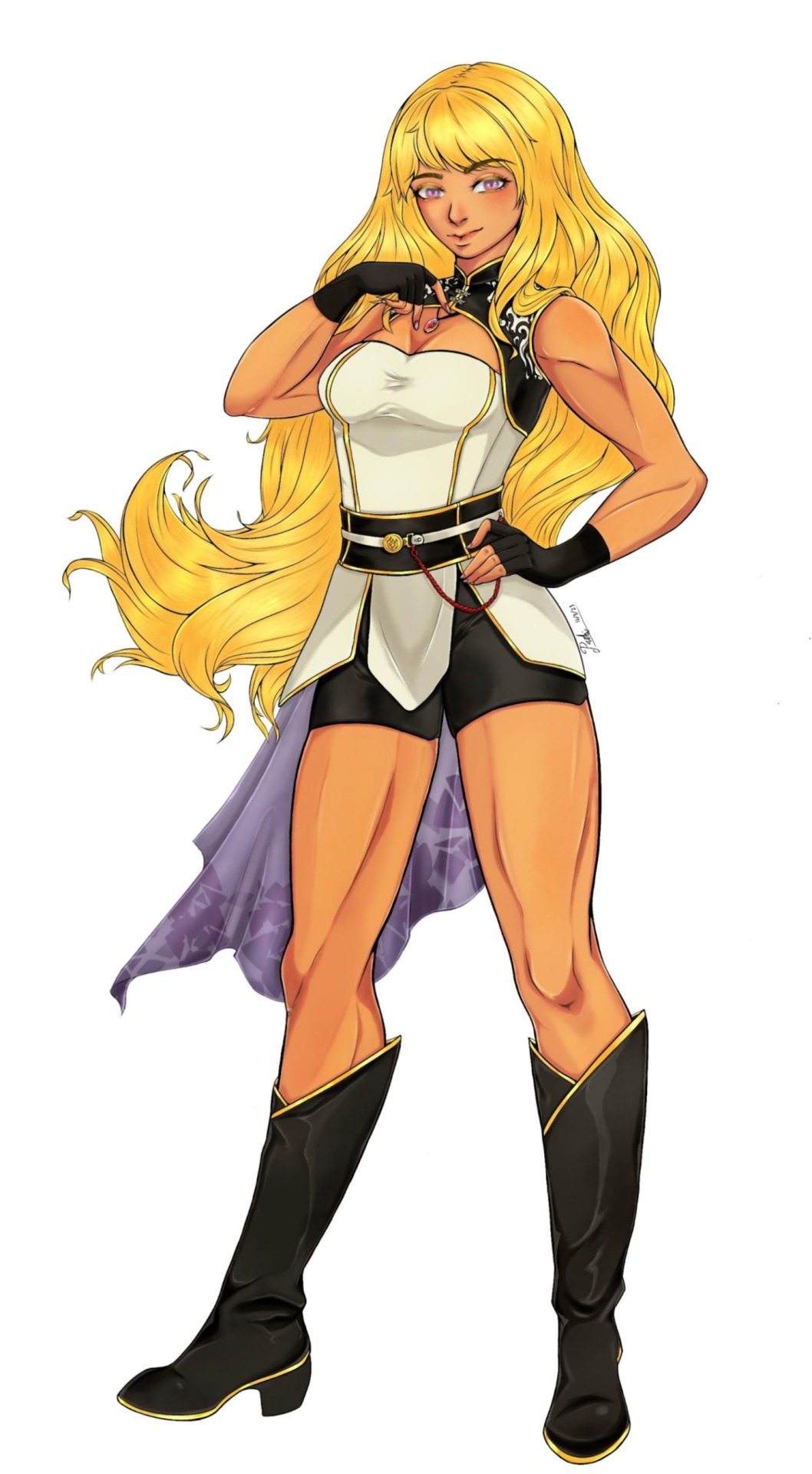
Once again I am begging for help on how to upload a better resolution please-
I wasn't confident in the coloring at all and gave up halfway. But after spending too long on this piece, I just wanna get it out.
Some design decisions:
The cloud design on her qipao jacket is a reference to Qrow, who wears feathers with his cape. Originally, I wanted to have her wear a similar, fluffy material, but that would've made her too top-heavy.
The red string is a connection to Summer and Ruby, something she made herself.
The pattern on her purple sash is emulating fish scales, specifically of the carp fish. It's a reference to the legend of carp fishes jumping into Longmen (Dragon Gate) and the one who passes becomes a dragon. Since Yang is starting her Huntress career at Beacon, she has the scales and clouds for her design here (carp and dragon respectively).
Tan Yang >>>>>>
I'm going to work on portraits and sketches in the upcoming months, just to practice the fundamentals some more. Hopefully, I will know how to color by then lol.
67 notes
·
View notes